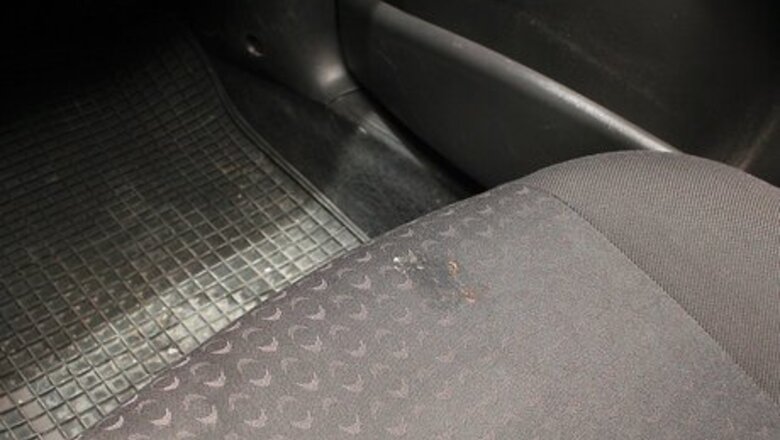
views
Cleaning Oil and Grease Stains from Carpet and Cloth Seats
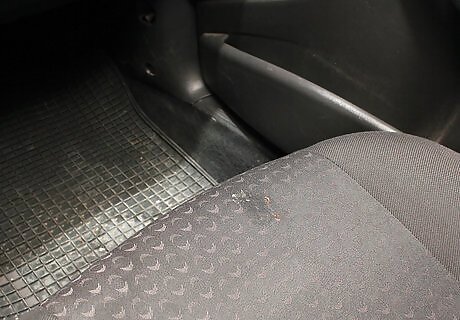
Understand the enemy. Whether you rubbed oil or grease on your interior ultimately doesn’t matter for cleanup purposes. Here’s why: Oils are defined as any compounds that are insoluble in water, soluble in organic solvents (non-polar things like gasoline), and liquid at room temperature. Grease, on the other hand, is simply an oil that has additives to make it semi-solid (kind of like Jell-O) at room temperature. These additives are solid and do not absorb into the surfaces inside your car. This means that, once you scrape off any excess contaminants from the surface of your interior, the stain left behind is an oil stain. Cleaning oil from cloth seats requires the same process you would use to clean it from carpet.
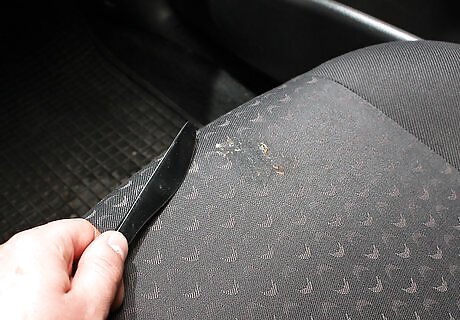
Scrape off any excess oil or grease. You can use a paint scraper, spoon, or knife. It doesn’t matter if you use metal or plastic, but be cautious not to puncture your seat.
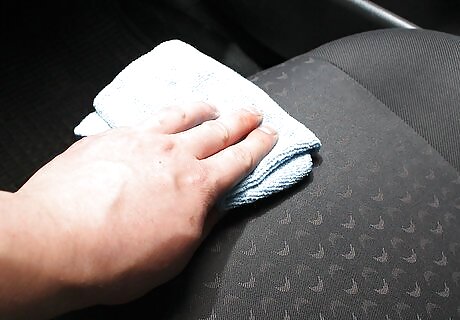
Blot the stain. This will remove any residual oil or grease that is left sitting on the surface of your interior. Use a dry paper towel or shop towel to do this.
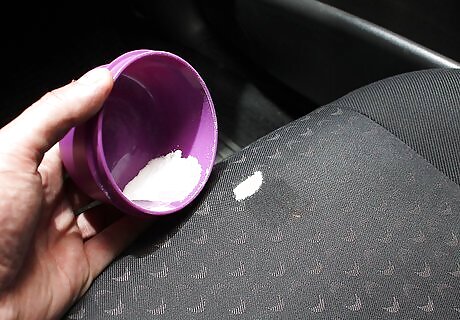
Apply baking soda to the stain. This will soak up the oil. Allow the baking soda to sit for 10-15 minutes.
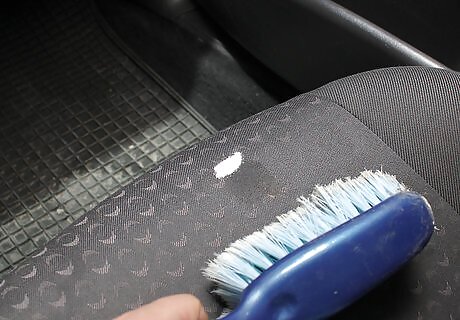
Remove the baking soda. You can vacuum it up with a shopvac or sweep it up. If there is a large amount of oil, you might put more baking soda on the stain and repeat this cycle several times.
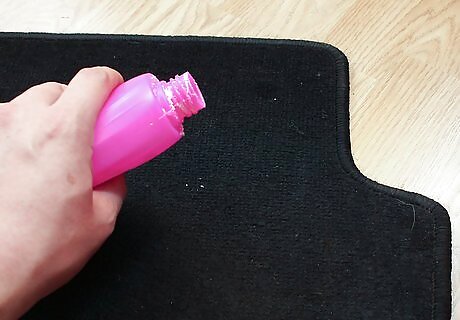
Clean the carpet with dry cleaning solvent if residual stains remain. If there is any stain left, you can repeat the process as long as you continue to see improvement. Instructions for sponging and blotting with a particular dry cleaner will be included on the manufacturer's bottle. Once you can no longer tell that this method is making a difference, you should move on to another method.
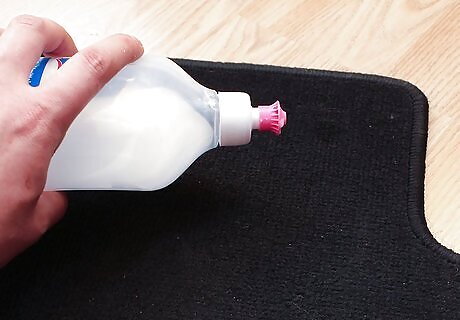
Scrub with a degreaser. A detergent such as Dawn is often enough to break up oil stains, especially fresh ones. You can also buy other over the counter grease/oil removers such as Goo Gone. This is the most common and straightforward way to remove a grease or oil stain.
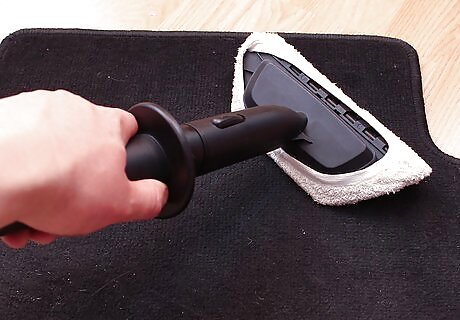
Steam the stained area. If a degreaser didn’t knock out the stain, you may need to use steam to coax it out. The steam will heat the fibers of your carpet and open up any pores in the fiber. This allows the carpet to “release” any trapped oil and gives you the chance to soak it up. You can use a traditional steam cleaner to do this job. If you do not have a steam cleaner, you can place a brown paper bag over the stain to absorb the oils. Then, apply steam by putting a clothing iron on top of the bag to create the heat and steam to free the oils.
Removing Grease and Oil from Leather with Degreaser
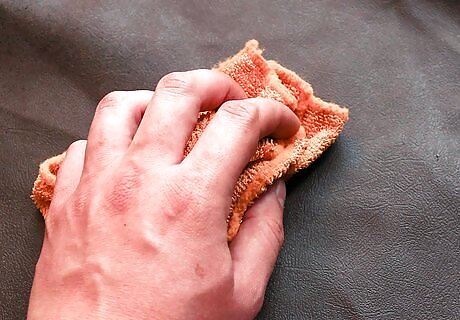
Remove excess grease or oil from the surface of your leather. Scraping and blotting steps above to make sure that you get as much grease/oil off of the surface before trying to clean it.
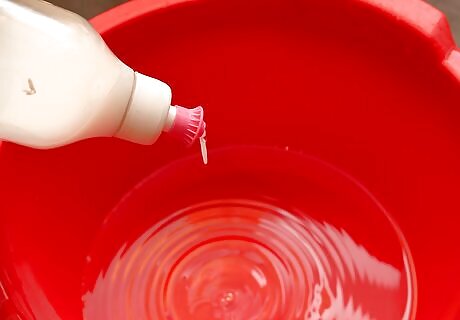
Mix a degreasing solution. Most commonly, this will mean adding a dish detergent such as Dawn to warm water and agitating to mix. You can also buy other over the counter grease/oil removers specific to leather. This is the most common and straightforward way to remove a grease or oil stain.
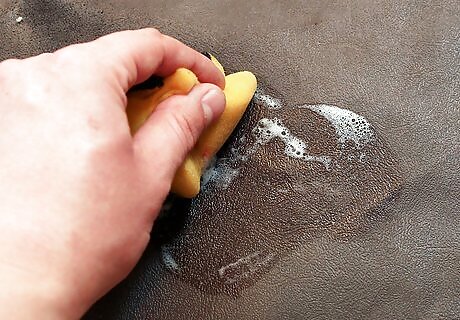
Clean the affected area. Thoroughly scrub the affected spot with your degreasing solution and a microfiber towel or rag. If you notice any of the color of your leather transfer onto the rag, stop immediately and allow the area to dry before resuming.
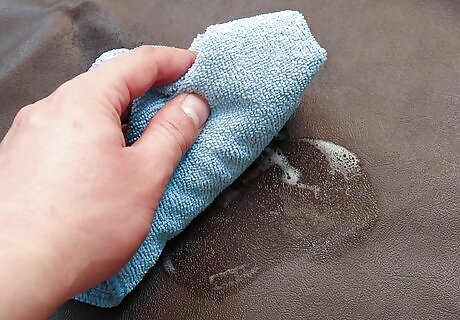
Use a wet towel to remove the cleaner. Again, distilled water is best for this, but tap water will work. Be sure that no lather or soapy residue is left behind. The soapy residue will collect dirt.
Removing Grease and Oil from Leather with Baking Soda
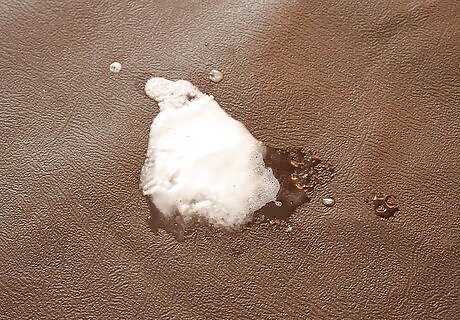
Mix up a baking soda paste. If the degreaser alone didn’t work, or you feel you need to deodorize a bit, you can mix ⅜ cup of warm water, 1 tablespoon of baking soda, ½ teaspoon of flour, and ⅛ cup of sea salt to make a cleaning paste. Add all of the ingredients to a bowl and mix until you have a paste.
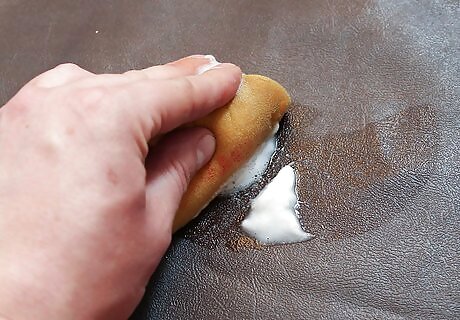
Scrub the affected area with your paste. The baking soda paste provides a bit more friction than most degreasers. This can help if you have a stain that requires a lot of scrubbing. Use a rag, or preferably a microfiber towel, to scrub the paste into the affected spot. If it is a small spot, or a spot with a lot of crevices you can use a toothbrush to better scrub the area.
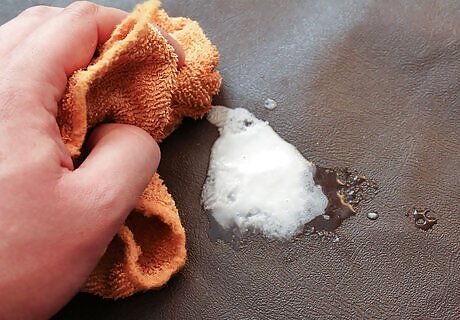
Remove the paste with a wet towel. Use a wet towel or microfiber towel to wipe away the cleaning solution and the grease. For this you need only use water, distilled water is best as it contains fewer contaminants that might leave water spots.
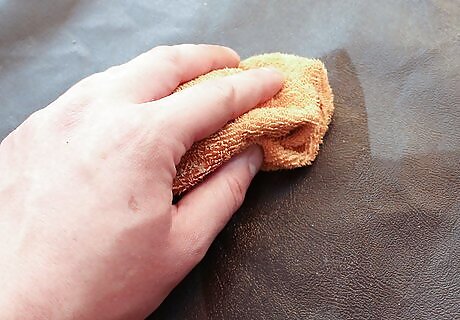
Repeat this process. If the stain isn’t completely removed after the first cleaning, repeat this process until the stain is gone.
Removing Grease and Oil from Plastic
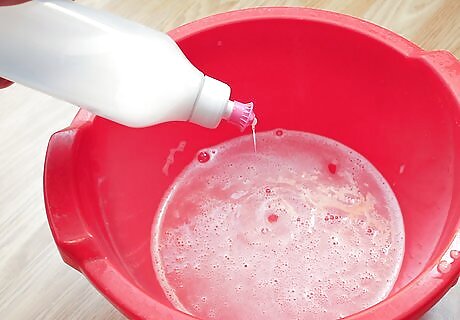
Follow the step above for mixing a degreasing solution. This should be treated similarly to the leather. Do not use a thinner or stripper such as toluene or lacquer thinner. This can damage your plastic.
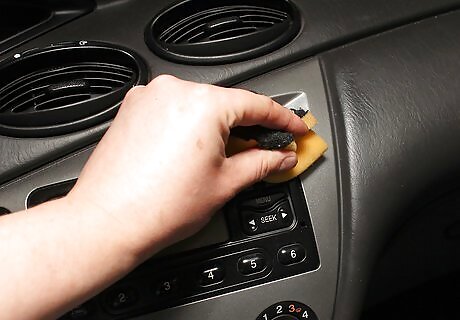
Choose a sponge or scrub brush. Be sure that the sponge or brush bristles are not so coarse that they will scratch your plastic. A toothbrush can be used for small or hard to reach areas.
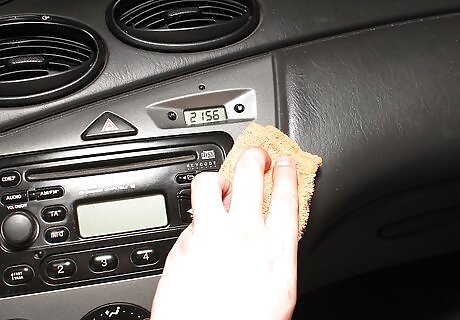
Scrub the area. Dip your chosen cleaning utensil into the solution and get to scrubbing. If you work up a leather, you can wipe it away with a paper towel or other rag.
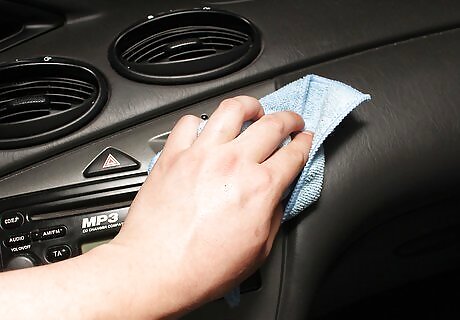
Do a final wipe with distilled water. If you do not have distilled water, tap water will work. This step will remove the cleaners and any oils that they lifted from the surface of your plastic.




















Comments
0 comment